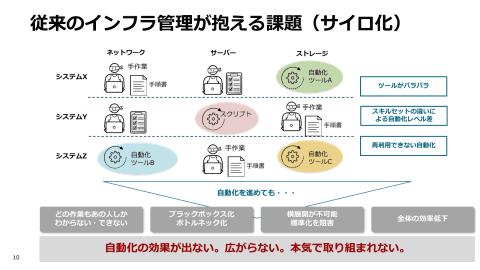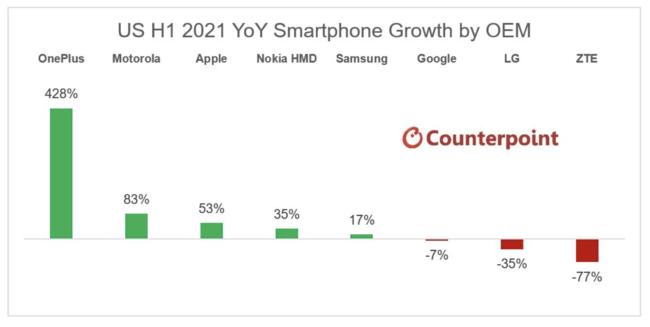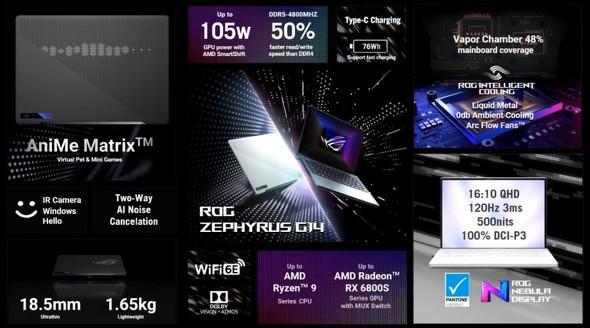Operation automation is not enough to improve the efficiency of actual work. What is the ideal infrastructure management and how to achieve it? --Mr. Okano, Red Hat
Efficiency and automation of infrastructure management is essential
In an environment where there is a shortage of IT administrators, infrastructure management work that should not be done by humans can be automated Efficiency is essential. There would be no objection to this. However, if you think of "automation" as "replacement with simple tools", it may not be very effective. Red Hat organizes this in terms of Automation 1.0 and Automation 2.0.
Before automation: A world where all work is done by humans Automation 1.0: A world where human work is assisted by tools Automation 2.0: A world where operations are serviced
Let's compare the world of automation 1.0 and 2.0 to a car production line. Automation 1.0 is to improve the efficiency of craftsmen's work by replacing "drivers" with "electric drivers", and automation 2.0 is to turn the work itself into a service, where anyone can press a switch and the robot arm will start moving and the car will be completed. .
Automation 1.0 and 2.0
If you replace this with infrastructure management, each engineer, such as server, storage, network, application, virtualization, cloud, etc., automates each work with scripts and vendor-specific tools to improve efficiency. The world is automated 1.0. The ideal world of operation that Red Hat envisions is "a world in which infrastructure operations are serviced and highly integrated. In such a world, craftsmen are no longer 'there'. People who want to use If you press a button when you want to use it, the wonderful operation service created by the craftsman will automatically start working, and the work will be done safely, accurately, and quickly.” We call this kind of world Automation 2.0. (Mr. Okano).
In an Automation 2.0 factory, there are no people on the production line. However, this does not mean that craftsmen are no longer needed. Instead of working on-site, craftsmen will shift to developing services, or, in the case of automobile production lines, programming robot arms.
At the beginning, I said that automation of IT operations is essential, but in fact, automation of IT operations in companies is not progressing slowly. According to a questionnaire at a workshop for IT operators conducted by Red Hat, more than 80% of the respondents said that the automation adaptation rate is less than half, and the automation rate in the entire work has hardly increased in recent years at 35%. . One of the big reasons for this is that we miss the point of automation.
When it comes to automating infrastructure work, the first thing that comes to mind is to improve the efficiency of "actual work", but in fact, there is always some kind of "coordination work" occurring before and after that. For example, create a work content from the input parameter sheet, create a document to explain the work content, gather the people concerned and review it, adjust the schedule of the workers, and after the work Making reports, in other words, work related to communication between people is "coordination work". In a relatively simple system like ten years ago, there are relatively many actual work parts in the entire infrastructure work, so automation focused on that would have had some effect. However, at present, the systems around us are intricately intertwined with virtualization and clouds, and as a result, the number of people involved has increased. The proportion of work related to communication is overwhelmingly large. For this reason, improving the efficiency of only the actual work part, which everyone thinks of when it comes to automation of IT, does not lead to the improvement of overall efficiency. For this reason, there are many companies that have implemented PoC but do not fully understand the effects, and are unable to implement automation.
Problems of modern system construction and operationWhat should we do? Red Hat cites the following three points as key points for effective management of modern infrastructure, where communication costs are high.
Point 1: Standardization of automation Point 2: Automation as a service Point 3: Infrastructure CI
Three points for achieving results with automationI will explain each below.


![10th generation Core i5 equipped 9.5h drive mobile notebook is on sale at 50,000 yen level [Cool by Evo Book] 10th generation Core i5 equipped 9.5h drive mobile notebook is on sale at 50,000 yen level [Cool by Evo Book]](https://website-google-hk.oss-cn-hongkong.aliyuncs.com/drawing/article_results_9/2022/3/9/4a18d0792cae58836b71b9f591325261_0.jpeg)





![[Amazon time sale in progress! ] 64GB microSD card of 1,266 yen and wireless earphone with noise canceling function of 52% off, etc. [Amazon time sale in progress! ] 64GB microSD card of 1,266 yen and wireless earphone with noise canceling function of 52% off, etc.](https://website-google-hk.oss-cn-hongkong.aliyuncs.com/drawing/article_results_9/2022/3/9/c88341f90bab7fe3ce1dc78d8bd6b02d_0.jpeg)
